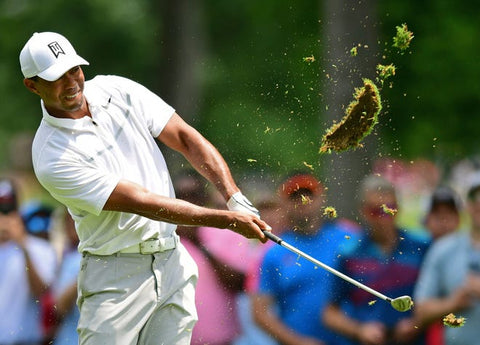Golf Grip - The right and wrong golf gripEveryone's golf club grip differs, from the standard textbook style to the unconventional. How you grip the golf club affects everything from the swing plane to the length of the backswing and top of the club position. The slightest grip flaws can cause a domino effect, starting with the first few inches to compensate. However, many great players utilize a "defective" golf grip. The very famous uses a grip that is just unconventional. The golf grip typically involves two sections: the style or type of grip and the hand's position. The grip style refers to the position of the right hand's pinky finger about the index and middle fingers of the left hand (for right-handed golfers) on the club. By far, the most common grip styles are the Wharton or overlapping grip, where the pinky is placed in the groove between the index and middle fingers of the left hand, and the staggered grip, where the pinky is tucked between these fingers. A few players use the so-called "baseball" grip, in which the fingers are not connected. The hand position describes the position of the hand relative to the club handle and, therefore, the position of the clubface. Depending on the position of the hand, the grip of a golfer is referred to as "neutral," "weak" or "strong," with neutral being the most desirable. Most golfers use the same grip and hand position on tee shots, fairway woods, hybrids and irons, chips, pitches and bunker shots. In other words, all but the putter. On the greens, players often switch to a different grip type. However, whatever grip is used, the goal is to ensure that the hands work in unison to promote arm and shoulder movement and limit wrist action.
Common putting golf grips include reverse overlap, cross-handed or left-handed low, and the claw (also known as the "saw" or "pencil grip"). Golfers who use a belly putter or long putter can use a grip that fits the increased length of these clubs. |
USD
- AED
- AFN
- ALL
- AMD
- ANG
- AUD
- AWG
- AZN
- BAM
- BBD
- BDT
- BGN
- BIF
- BND
- BOB
- BSD
- BWP
- BZD
- CAD
- CDF
- CHF
- CNY
- CRC
- CVE
- CZK
- DJF
- DKK
- DOP
- DZD
- EGP
- ETB
- EUR
- FJD
- FKP
- GBP
- GMD
- GNF
- GTQ
- GYD
- HKD
- HNL
- HUF
- IDR
- ILS
- INR
- ISK
- JMD
- JPY
- KES
- KGS
- KHR
- KMF
- KRW
- KYD
- KZT
- LAK
- LBP
- LKR
- MAD
- MDL
- MKD
- MMK
- MNT
- MOP
- MUR
- MVR
- MWK
- MYR
- NGN
- NIO
- NPR
- NZD
- PEN
- PGK
- PHP
- PKR
- PLN
- PYG
- QAR
- RON
- RSD
- RWF
- SAR
- SBD
- SEK
- SGD
- SHP
- SLL
- STD
- THB
- TJS
- TOP
- TTD
- TWD
- TZS
- UAH
- UGX
- USD
- UYU
- UZS
- VND
- VUV
- WST
- XAF
- XCD
- XOF
- XPF
- YER



